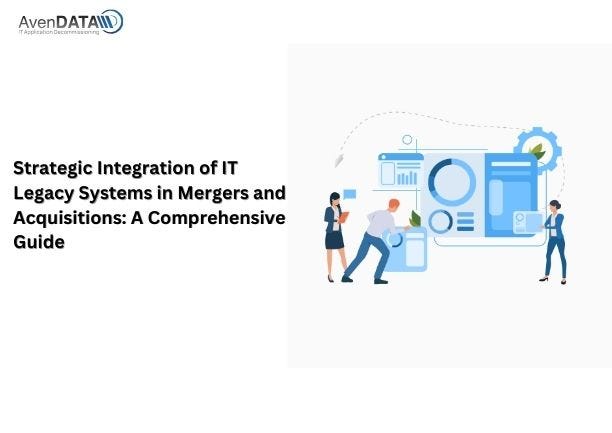Strategic Integration of IT Legacy Systems in Mergers and Acquisitions: A Comprehensive Guide

Introduction:
In today’s dynamic business landscape, mergers and acquisitions (M&A) have become strategic imperatives for organizations seeking growth, market expansion, and competitive advantage. One critical aspect of M&A that demands meticulous planning and execution is the integration of IT legacy systems. This comprehensive guide explores the strategic considerations and best practices for seamlessly incorporating IT legacy systems into the fabric of a newly merged or acquired entity.
Understanding the IT Landscape:
Conducting a thorough assessment of the IT infrastructure of both the acquiring and acquired entities.
Identifying legacy systems, their functionalities, and their impact on ongoing operations.
Developing a Unified IT Strategy:
Formulating a cohesive IT strategy that aligns with the overall business objectives of the merged entity.
Ensuring that the integrated IT landscape supports enhanced efficiency, scalability, and innovation.
Data Harmonization and Migration:
Addressing data disparities and inconsistencies between legacy systems to facilitate a smooth migration process.
Implementing data governance practices to maintain data integrity and compliance during migration.
Legacy System Rationalization:
Evaluating the relevance and efficiency of existing legacy systems.
Identifying opportunities for consolidation, retirement, or modernization to optimize the IT portfolio.
Ensuring Business Continuity:
Implementing strategies to minimize disruptions to ongoing business operations during the integration process.
Developing contingency plans for potential challenges and system downtime.
Employee Training and Change Management:
Providing comprehensive training programs to employees on the new integrated IT environment.
Implementing change management strategies to foster a positive mindset and mitigate resistance.
Cybersecurity and Risk Mitigation:
Conducting a robust cybersecurity assessment to identify vulnerabilities.
Implementing risk mitigation measures to safeguard sensitive data and protect against potential threats.
Monitoring and Continuous Improvement:
Establishing monitoring mechanisms to track the performance of the integrated IT systems.
Iteratively refining the IT integration strategy based on feedback and evolving business needs.
Compliance and Legal Considerations:
Ensuring compliance with industry regulations and legal requirements during the integration.
Collaborating with legal experts to address any contractual or regulatory implications.
Measuring Success:
Defining key performance indicators (KPIs) to measure the success of IT integration.
Soliciting feedback from stakeholders and making adjustments to enhance long-term success.
Conclusion:
Successful integration of IT legacy systems in mergers and acquisitions requires a meticulous and strategic approach. By prioritizing understanding, planning, and collaboration, organizations can navigate the complexities of IT integration, paving the way for sustained growth and innovation in the post-merger landscape.
